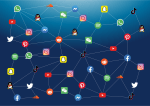How to Install Python: A Simple Guide

August 12, 2023
Python is a high-level, versatile, and widely-used programming language that has gained immense popularity due to its simplicity, readability, and extensive support for various application domains.
Guido van Rossum had the idea of creating this platform in the early 1980s. In those years, at the CWI in Amsterdam, researchers including Guido Van Rossum developed a language named ABC. This was very powerful and elegant and had become popular in the Unix world. A few years later, Van Rossum had a number of ideas aimed at improving ABC, and therefore set to work on the development of a new language: Python. It will be released in 1991. Python was designed with a strong emphasis on code readability and a philosophy that prioritizes clear and concise syntax. This enables programmers to express their ideas effectively and efficiently.
Python’s hallmark feature is its elegant and intuitive syntax. This allows developers to write code that closely resembles natural language, making it accessible to both beginners and experienced programmers. Such a unique trait has contributed to Python’s rapid adoption in a diverse range of fields, from web development and scientific computing to artificial intelligence and data analysis.
How Does It Work?
Python is like a friendly guide that helps your computer understand what to do. You give it instructions by writing lines of code in plain English (well, almost!). These instructions tell the computer what tasks to perform.
When you’re done writing your instructions, Python takes a look at them and changes them into a special code that the computer can read. This special code is called “bytecode.”
Then, Python starts talking to the computer’s brain, called the “interpreter.” The interpreter reads the bytecode and follows the steps one by one. It does whatever you told it to do, like math calculations or talking to other programs.
Python can also use helpful tools that come with it, like a toolbox full of gadgets. These tools, called “modules,” help Python do more things, like drawing pictures, talking to the internet, or even playing sounds.
If there’s a mistake in your instructions, Python will let you know with a message. Once Python finishes following all your instructions, it says, “All done!” and your computer shows you the results.
Broadly speaking, we could say that Python is a sort of translator mediating between you and your computer. It turns your human-like instructions into a language the computer understands, and then the computer does what you asked for.
On the other hand, it should be added that Python has a couple of drawbacks too. Keep in mind, as for instance, that its system is not 100% secure for programs. In addition, its system may not be the fastest in the digital world. What’s more, is not available on any computer device.
In conclusion, every tool has its strengths and weaknesses. Python might not be the best choice for everything, but it’s still amazing for many tasks!
Who is Python Made For?
Python is used by a wide range of individuals, organizations, and industries for various purposes due to its versatility and extensive library support. Here are some examples of who could find Python useful:
- Web Developers: to build dynamic and interactive websites using frameworks like Django and Flask. These frameworks streamline the development process, making it easier to create robust and scalable web applications.
- Data Scientists and Analysts: for tasks such as data cleaning, exploration, visualization, and machine learning. Libraries like NumPy, Pandas, Matplotlib, and scikit-learn provide powerful tools for working with data.
- Machine Learning and AI Researchers: Python’s simplicity and the availability of frameworks like TensorFlow, PyTorch, and Keras have made it a go-to language for developing AI and machine learning models.
- Scientists and Researchers: for various purposes, including data analysis, simulations, and numerical computing.
- Professors and education-related fields: Python is excellent for teaching programming concepts to beginners.
- Automotive and Aerospace Industries: used for simulation, tests and analysis in industries.
- Game Development: for creating prototypes, tools, and scripts. Libraries like Pygame provide resources for developing 2D games.
- Finance and Trading: for quantitative analysis, risk assessment, algorithmic trading, and financial modeling.
- Internet of Things (IoT): for managing and processing data from sensors, devices, and embedded systems.
- AI Chatbots and NLP: Python is employed to create chatbots, voice assistants, and other NLP applications.
How to Install Python Easily
The steps are very intuitive and easy to follow, you will not need to pay much attention to the download. As a result, just by following this simple guide, you can have Python right on your laptop in no time!
As with so much software available online, Python can be downloaded from a variety of sources. In the next few steps we will show you some of the simplest and most regular ones in circulation.
Installation Via Python Website
- The first thing you will want to do is to head to your favorite browser where you will go to the official Python website. There you will find the download of the Windows installer
- At this point, you can simply follow the usual steps for installing Windows software. You will then need to accept “Install Now.” You will also need, here, to click “Install launcher for all users” and “Add Python 3.10 to PATH.” We will need this to use the Python interpreter from any part of the filesystem.
- Having finished downloading and installing, we can now click on “Disable path length limit” and then Close
You’re already done, as simple as that.
Installation Via Microsoft Store
One of the most widely used methods of downloading software for one’s laptop is definitely Microsoft’s Store. In fact, it allows us to be able to download in a way that is not only easy, but above all safe and legal an endless amount of programs for our PC.
- Open “Store” application and type in the search bar “Python”
- Several versions of Python will be available, from the newest to the oldest. It will be up to you to choose the version that best suits your needs and those of your computer’s memory and processor. Therefore, choose the best option
- You can now click on “Get” and download the software you chose.
Conclusion
Python is an extremely useful platform that enables better and more effective use of our PC. In fact, it acts as a mediator between our requests and activities and the computer system as if it were a real command interpreter.
This software can be extremely useful in several areas of application. In fact, its users range from scientists, to educators and web developers.
Downloading this software is extremely simple, intuitive and completely smooth. In fact, it can be downloaded from the official Python website, which provides a direct download of the software. In addition, there is also the option of downloading the product from the Microsoft Store.








